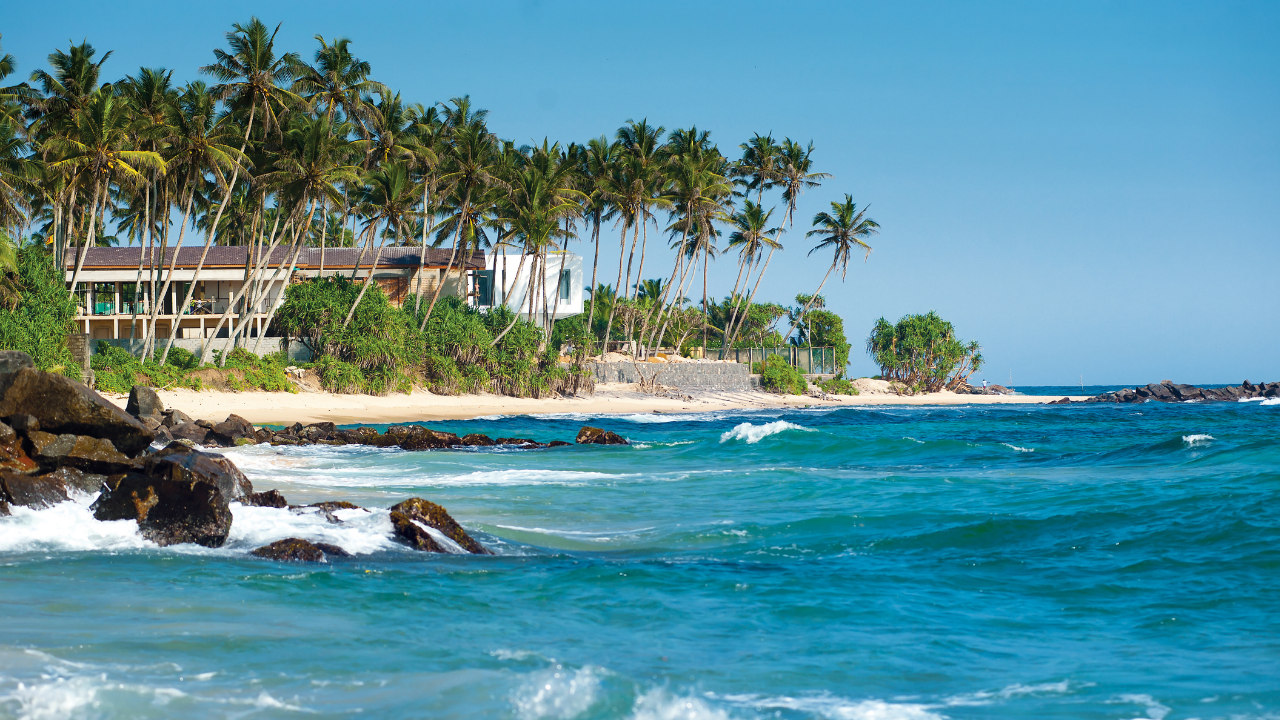Sri Lanka

Brief information
General Information
Codes
Statistics
Politics
Travel
Language
About Sri Lanka
📍 Geographic Location and Natural Beauty
Nestled in the heart of the Indian Ocean, Sri Lanka is a stunning island nation located just off the southeastern coast of India. Often referred to as the "Pearl of the Indian Ocean", this tropical paradise boasts lush rainforests, misty mountains, golden beaches, and diverse wildlife. Despite its relatively small size, Sri Lanka has an incredibly varied landscape—from the arid plains of the north to the tea-covered hills of the central highlands and the rich coastal ecosystems teeming with marine life.
🏛️ A Brief Historical Background
Sri Lanka's history dates back over 2,500 years, making it one of the world's oldest continuously inhabited regions. It was home to powerful ancient kingdoms such as Anuradhapura and Polonnaruwa, known for their advanced irrigation systems and grand Buddhist architecture. The island played a pivotal role in the spread of Theravāda Buddhism, which remains deeply woven into its culture today.
Throughout history, Sri Lanka attracted colonial interest due to its strategic maritime location and abundant natural resources. The Portuguese, Dutch, and British each left their mark, with Britain ultimately ruling the island until independence in 1948. Known as Ceylon under colonial rule, the country adopted the name Sri Lanka in 1972 when it became a republic.
🌐 Global Significance and Modern Role
Sri Lanka holds a unique position in South Asia—not only as a cultural and religious hub but also as a key player in the Indian Ocean trade routes. It serves as a critical point in maritime logistics between East and West. The country is a founding member of the South Asian Association for Regional Cooperation (SAARC) and maintains strong diplomatic relations globally.
Today, Sri Lanka is celebrated for its world-class tea exports, sustainable tourism, and rich biodiversity, including several UNESCO World Heritage Sites. It has also become a hotspot for ecotourism, spiritual retreats, and cultural exploration. Despite facing challenges such as civil unrest in the past and economic hurdles in the present, Sri Lanka continues to enchant the world with its resilience, warmth, and heritage.
Interesting facts
🌍 Geography & Nature
1. Sri Lanka is one of the world's 36 biodiversity hotspots
Home to an extraordinary number of endemic species, including leopards, purple-faced langurs, and over 430 bird species.
2. Oldest human-planted tree still living
The Sri Maha Bodhi Tree in Anuradhapura was planted in 288 BC and is still revered and protected today.
3. The world’s largest annual elephant gathering
At Minneriya National Park, hundreds of wild elephants converge in one place, an unmatched spectacle in Asia.
4. Dual monsoon climate
Sri Lanka benefits from both the southwest and northeast monsoons, creating lush landscapes across different regions year-round.
5. Land of waterfalls
With over 100 recorded waterfalls, the tallest being Bambarakanda Falls at 263 meters, the island’s terrain is rich in cascading beauty.
🏛️ History & Heritage
6. Home to 8 UNESCO World Heritage Sites
These include Sigiriya, Polonnaruwa, and the Sacred City of Kandy, each telling a story of ancient glory and culture.
7. Sigiriya Fortress: The 5th-century sky palace
Built atop a 200-meter rock, this fortress showcases ancient urban planning, irrigation, and fresco art.
8. A key stronghold of Theravāda Buddhism
Sri Lanka has played a pivotal role in preserving and spreading Theravāda Buddhism across Southeast Asia.
9. Ancient maritime trade hub
Sri Lanka was known to Roman, Arab, and Chinese traders. Chinese monk Fa-Hien visited in the 5th century and documented his journey.
10. Numerous ancient capitals
From Anuradhapura to Polonnaruwa and Kandy, Sri Lanka has a rich legacy of royal cities and dynasties.
🎭 Culture & Society
11. Multi-ethnic, multi-religious harmony
Buddhists, Hindus, Muslims, and Christians coexist and celebrate their faiths and festivals across the island.
12. Traditional mask dancing and rituals
Devil dancing and Kolam performances are part of healing ceremonies and folk theatre traditions.
13. The art of cave painting and sculpture
The Dambulla Cave Temple features vibrant murals and statues dating back over 2,000 years.
14. Rice and curry: A national staple
Each region has unique variations, often served with multiple vegetable and meat curries and sambols.
15. Cricket is more than a sport
It’s a national obsession, and the country has produced legendary players like Muttiah Muralitharan and Kumar Sangakkara.
🏞️ Economy & Modern Development
16. World’s first country to protect mangroves by law
Sri Lanka legally protects all its mangrove forests, recognizing their ecological importance.
17. Ceylon Tea: A global brand
Sri Lanka is one of the largest tea exporters in the world and its Ceylon Tea is internationally renowned for its quality.
18. One of Asia’s most literate populations
With a literacy rate above 92%, Sri Lanka places strong emphasis on free education.
19. Hydropower dependency
A significant portion of its electricity comes from hydroelectric plants fed by abundant rivers and rainfall.
20. A booming tourism sector
Despite past challenges, tourism contributes majorly to the GDP with highlights like eco-tourism, cultural tourism, and beach resorts.
🐘 Wildlife & Conservation
21. Leopard capital of the world
Yala National Park has one of the highest densities of leopards in the world.
22. Only country where elephants have legal personhood (de facto)
Cultural and religious norms provide elephants ceremonial roles, especially in Buddhist processions like Esala Perahera.
23. Marine biodiversity paradise
Sri Lanka’s oceans are home to blue whales, dolphins, and vibrant coral reefs, making it a prime diving and whale-watching destination.
24. Conservation through community forestry
Villagers participate in forest conservation and receive legal rights to sustainably manage parts of the land.
25. Sloth bears, pangolins, and purple-faced langurs
The island hosts many rare and elusive mammals, many of which are endangered and protected under law.